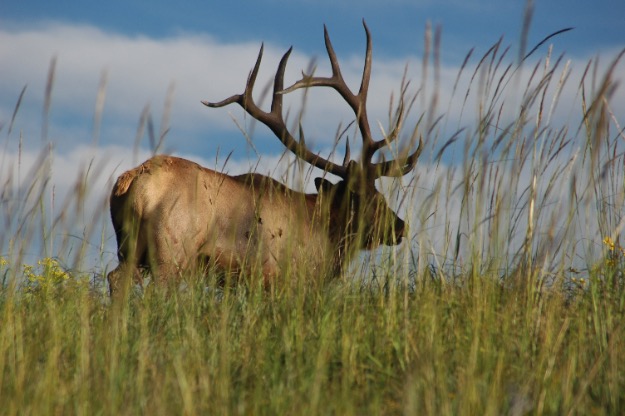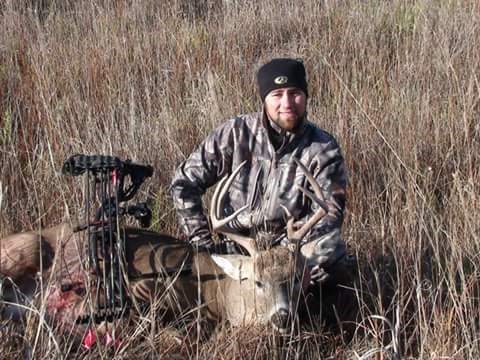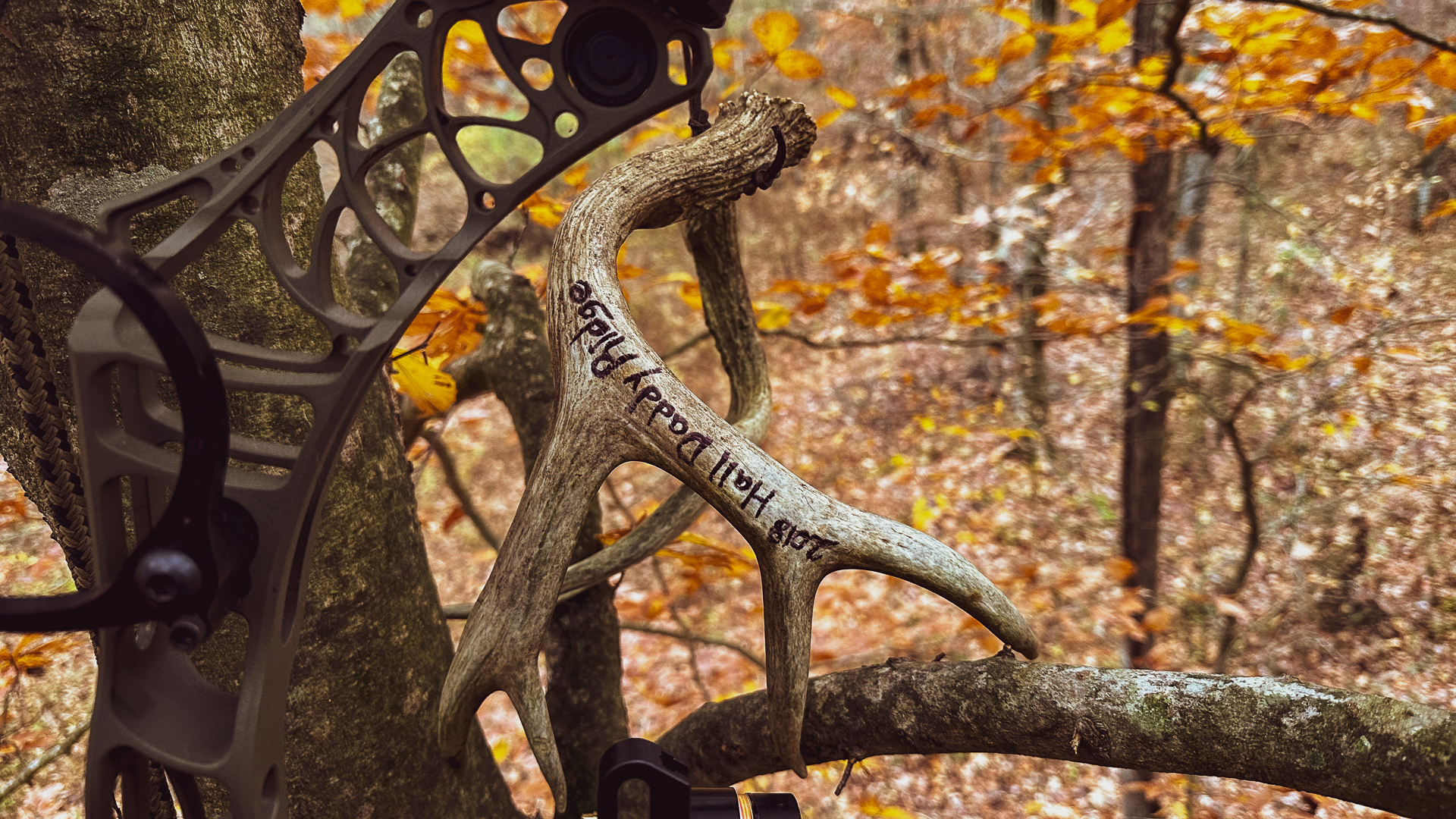
Editor’s Note: Cliff Hockett from Grand Junction, Colorado, started elk hunting when he was 12, and has been chasing those brown buglers for more than 15 years. Hockett has been a Mossy Oak pro for the last 3 years. His two favorite patterns for elk hunting are Mossy Oak Brush and Mossy Oak Treestand. Hockett explains, “My very favorite pattern is the Mossy Oak Duck Blind. However, since the Duck Blind pattern was created for waterfowl hunters, finding that pattern in lightweight clothing that I can wear for archery hunting is often difficult. The reason I like this pattern is regardless of where you hunt there's always going to be dry grass, and Mossy Oak Duck Blind looks just like dry grass. Colorado’s archery season for elk starts the last weekend in August and ends the last weekend in September. During this time of the year, our average temperatures are in the 80s, especially in the first 2 weeks of the season.”
 I played football in high school. As you may know, football practice starts in August, and we play throughout the entire elk season. So, I had to divide up my time between football practice and elk hunting. One morning my dad, Dale, and I decided to go elk hunting early, and then come back for football practice late in the afternoon. We hunted close to home. Before we started hunting, we walked in 4-1/2 miles to a place my dad had hunted before and had been successful. We walked past what we call the Texas Range, a big, open meadow where mostly Texas hunters hunt. They sit down on the side of the meadow and try to call bulls in to them.
I played football in high school. As you may know, football practice starts in August, and we play throughout the entire elk season. So, I had to divide up my time between football practice and elk hunting. One morning my dad, Dale, and I decided to go elk hunting early, and then come back for football practice late in the afternoon. We hunted close to home. Before we started hunting, we walked in 4-1/2 miles to a place my dad had hunted before and had been successful. We walked past what we call the Texas Range, a big, open meadow where mostly Texas hunters hunt. They sit down on the side of the meadow and try to call bulls in to them.
We went two or three drainages over from the Texas Range and started hunting up an avalanche chute. We called a bull in and spooked him. Then we heard another bull bugling. We decided he was the herd bull and had some cows with him. Since I had a rifle tag, we went toward the bugling of the herd bull. When I'm bowhunting I don’t really try to take the herd bull, because he's too difficult to get close to and always will stay with the cows on the public lands we hunt. If you try to take the herd bull, 90 percent of the time you'll just spook him and the cows with him. Instead, we choose to hunt the satellite bulls – generally the four or five bulls around the herd bull. You’ll usually have more success.
 As we were calling, the herd bull was taking his cows away from us, but we kept following him into a box canyon. I think the herd bull was telling us, “This is the direction we’re going. Just keep on coming, and you'll catch up to us.” However, elk have four legs. Dad and I only had two legs, so they could go much faster and farther than we could. We never could see the herd bull, but we caught up to some cows, and we could see some young bulls.
As we were calling, the herd bull was taking his cows away from us, but we kept following him into a box canyon. I think the herd bull was telling us, “This is the direction we’re going. Just keep on coming, and you'll catch up to us.” However, elk have four legs. Dad and I only had two legs, so they could go much faster and farther than we could. We never could see the herd bull, but we caught up to some cows, and we could see some young bulls.
Finally, we decided to leave this herd, go back to the avalanche chute, go over the top and hunt the other side of the avalanche chute. We wanted to hunt the north-facing slope of that mountain. As we started up the avalanche chute, we spotted the bull we had spooked that morning, and we saw him go over the top of the mountain that we were climbing. By the time we reached the top of the mountain, it was 1:20 pm. There were snow patches too, on the top of the mountain. Although the temperature was 70 degrees, we could see our breath, because the air at the top of the mountain was so cold. We heard two bulls fighting and kept moving toward the fight. When we finally got to where we could see the two bulls, the loser of the fight started toward us and walked to within 12 yards of me and my dad. I shot this 5x5 that would score about 230 inches on Pope & Young.
 I pulled the trigger at 1:32 pm, and I knew that football practice was at 5:00 pm. So, my dad and I loaded-up half of the bull in our frame pack. My dad called one of his friends and told him where we had parked the truck. He asked him to bring a frame pack and help us bring the bull out, so I could make football practice. My mom rode with my dad’s friend. She met me at the truck and took me to football practice, while my dad and his buddy carried out the other half of my bull. When I arrived at football practice, I had hiked 4-1/2 miles into the spot where we took the elk. I had carried meat out for 4-1/2 miles. Then, I had to be ready to practice football as soon as I changed clothes and got to practice. I never will forget that hunt and that day. It probably is one of the longest, hardest, most-physical days I've ever spent elk hunting.
I pulled the trigger at 1:32 pm, and I knew that football practice was at 5:00 pm. So, my dad and I loaded-up half of the bull in our frame pack. My dad called one of his friends and told him where we had parked the truck. He asked him to bring a frame pack and help us bring the bull out, so I could make football practice. My mom rode with my dad’s friend. She met me at the truck and took me to football practice, while my dad and his buddy carried out the other half of my bull. When I arrived at football practice, I had hiked 4-1/2 miles into the spot where we took the elk. I had carried meat out for 4-1/2 miles. Then, I had to be ready to practice football as soon as I changed clothes and got to practice. I never will forget that hunt and that day. It probably is one of the longest, hardest, most-physical days I've ever spent elk hunting.
To learn more about hunting, check out John E. Phillips’ new eBook, “Bowhunting Deer: Mossy Oaks Pros Know Bucks and Bows.” You also can download a free Kindle app that enables you to read the book on your iPad, computer or SmartPhone.
For information on making jerky from your elk and other big game animals to provide a protein-rich snack, you can download a free book.
Tomorrow: Clifford Hockett’s Dad Told Him Not to Pass Up Another Bull or He’d Take Him Home






























